Managing your finances can be a daunting task, but with the right digital tools, it becomes more manageable. Money-saving apps have emerged as a popular solution, helping users achieve their financial goals.
These apps offer a range of features, from automated savings to tracking spending and providing insights into financial habits. By leveraging these tools, individuals can make informed decisions about their finances.
With numerous options available, selecting the right app can be challenging. This guide will explore the top digital tools available, examining their key features, pricing plans, and pros and cons.
Key Takeaways
- Discover the top money-saving apps that can help you achieve your financial objectives.
- Learn how these digital tools can automate your savings and track your spending.
- Understand the key features and pricing plans of various money-saving apps.
- Make an informed decision by weighing the pros and cons of each app.
- Find the perfect tool to manage your finances effectively.
Understanding Money Saving Apps
With the advent of money saving apps, saving has become more accessible. These digital tools are designed to help users manage their finances more effectively.
What Are Money Saving Apps?
Money saving apps are applications that connect to your bank accounts, credit cards, and other financial services to provide a comprehensive view of your financial situation. They offer various functionalities, including automated savings transfers and budget tracking, making it easier to achieve your financial goals. Many of these apps offer bank-level security features, such as multifactor authentication, and partner with banks to provide FDIC insurance, protecting up to $250,000 per depositor.
Why Use Money Saving Apps?
Using money saving apps can simplify complex financial tasks and help establish consistent saving habits. These apps provide motivation through visual goal tracking and can be particularly beneficial for those who struggle with traditional saving methods. By leveraging these digital tools, users can optimize their financial management without spending significant time on manual tracking, making it easier to save money and achieve their savings goals.
How Money Saving Apps Can Help You Reach Financial Goals
Reaching your financial goals is a significant achievement, and money-saving apps can be a valuable tool in this journey. By simplifying difficult financial tasks, these apps help you stay on track with your objectives.
Automating Your Savings
Money-saving apps can transform your financial journey by automating the savings process, removing the temptation to spend funds that should be saved. These tools analyze your income and spending patterns to identify optimal times to transfer small amounts to savings, making the process painless and consistent.
Tracking Your Spending
The spending tracking features offered by these apps provide valuable insights into your financial habits, highlighting areas where you might be overspending and opportunities to redirect those funds toward your savings goals. By providing visual representations of your progress, these apps create motivation and accountability.
Acorns: Best for Automated Investing
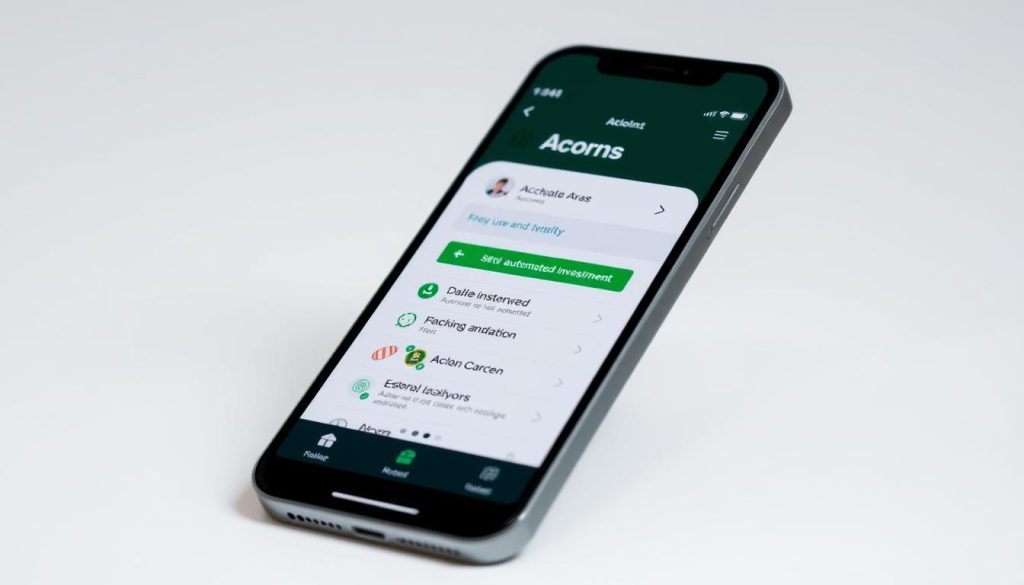
Acorns stands out as a premier solution for those looking to automate their investment strategy without requiring significant financial expertise or large initial deposits. The app is designed to help put saving and investing on autopilot, making it an ideal choice for users looking to grow their savings effortlessly.
Key Features
The Acorns app boasts several key features that make it an attractive option for investors. Its signature Round-Ups® feature automatically invests your spare change from everyday purchases, making investing accessible even for those with limited disposable income. Users can choose from multiple account options, including personal investment accounts, retirement accounts (IRA), and even UTMA/UGMA accounts for children through the Premium plan.
Pricing Plans
Acorns offers various pricing plans to suit different user needs. The plans include Acorns Personal ($3/month), Acorns Personal Plus ($5/month), and Acorns Premium ($9/month). All plans include the spare change Round-Ups® feature, ensuring that users can start investing their spare change regardless of the plan they choose.
Pros and Cons
While Acorns offers many benefits, including professionally designed portfolios and automatic rebalancing, the monthly subscription fees might seem high for smaller account balances. However, the educational resources and simplified approach to investing make Acorns particularly valuable for beginners looking to build healthy financial habits.
Quicken Simplifi: Best for Budgeting Beginners
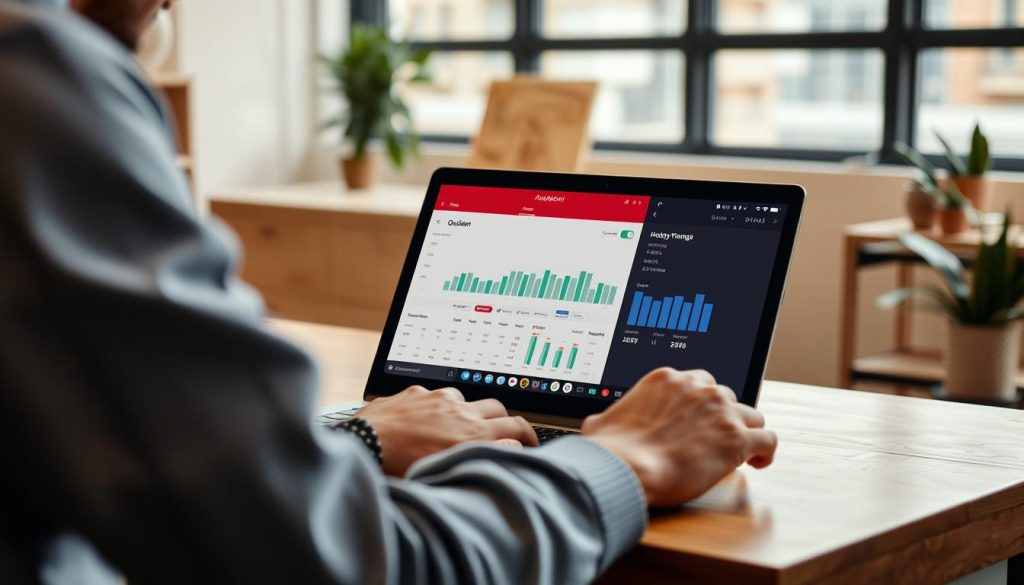
With its intuitive interface and robust features, Quicken Simplifi is tailored to assist budgeting beginners in achieving their financial goals. It offers a comprehensive platform for managing finances, making it easier for users to stay on top of their spending and savings.
Key Features
Quicken Simplifi offers several key features that make it an ideal budgeting app. These include an intuitive dashboard that consolidates all financial accounts, automatic transaction categorization, and personalized spending plans based on income and expenses.
Main features:
– Consolidated financial accounts in one dashboard
– Automatic transaction categorization
– Personalized spending plans
– Custom savings goals with visual progress indicators
– Spending watchlists with alerts for overspending
Pricing Plans
Quicken Simplifi is available for a subscription fee of $3.99 per month, billed annually. While there is no free version, new users can take advantage of a 30-day risk-free trial. Additionally, Quicken occasionally offers promotional discounts throughout the year, making it more accessible to potential subscribers.
Pros and Cons
The pros of using Quicken Simplifi include its user-friendly interface, comprehensive financial overview, and the ability to share financial reports with partners or advisors. However, some users may find the lack of a free version and the annual billing cycle to be drawbacks.
Qapital: Best for Customizable Saving Rules

With its innovative approach to savings, Qapital allows users to automate their financial goals like never before. Qapital is a personal finance app that helps users save small amounts of money and automate the process.
Key Features
Qapital distinguishes itself through highly customizable saving rules that allow users to create personalized automation based on their unique spending habits and financial goals. The app offers 15 different rule options, including the “Guilty Pleasure” rule.
Pricing Plans
Qapital offers three membership tiers: Basic ($3/month), Complete ($6/month), and Premier ($12/month). Higher-tier plans include access to a Visa® debit card and automated investment accounts with portfolios designed to match your risk tolerance and time horizon.
Pros and Cons
The features of Qapital include comprehensive budgeting and debt tracking tools, making it a holistic approach to financial management. Users can create shared goals with partners, making it an excellent choice for couples working together on financial objectives like vacations, home purchases, or debt reduction.
Rocket Money: Best for Subscription Management

For individuals drowning in a sea of recurring subscriptions, Rocket Money emerges as a lifeline, providing a comprehensive management solution. This app excels at helping users identify and manage their subscriptions, a common source of budget leakage.
Key Features
Rocket Money offers a wide range of features, including budgeting tools, net worth tracking, and credit monitoring. Its subscription management feature is particularly noteworthy, allowing users to track and manage their recurring subscriptions effectively.
Pricing Plans
Rocket Money provides both a free version and a premium version, with the latter costing between $6-$12 per month. Users can choose their price during sign-up, and the premium version starts with a 7-day free trial. The bill negotiation service is an added feature, charging 35%-60% of the amount saved.
Pros and Cons
The app’s ability to negotiate bills on behalf of users can save hundreds of dollars annually. While the free version offers substantial functionality, the premium version provides additional benefits. Users appreciate the flexible pricing model, allowing them to pay based on their perceived value of the service.
Goodbudget: Best for Envelope Budgeting
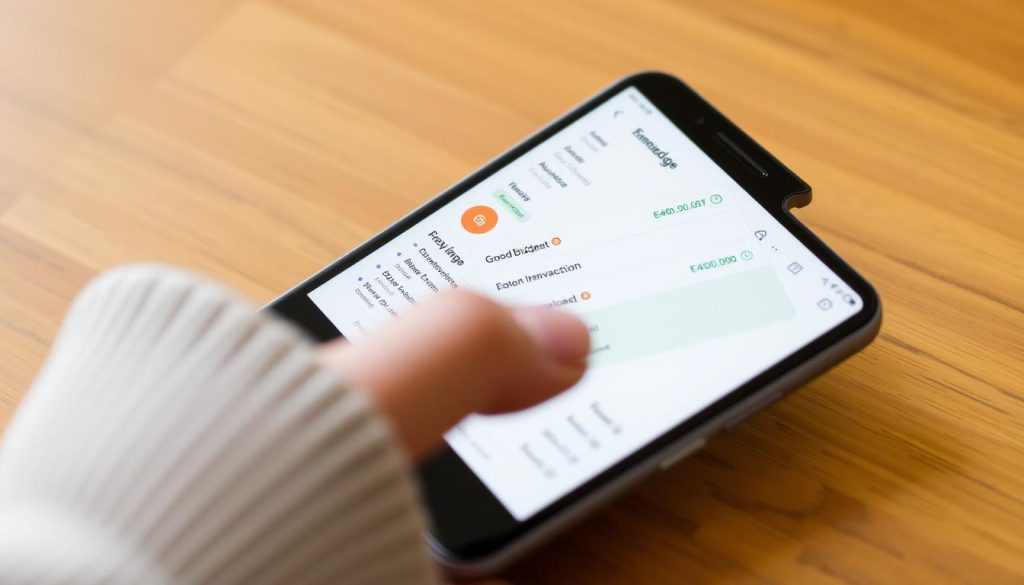
For those looking for a more traditional budgeting approach with a modern twist, Goodbudget is an excellent choice. This personal finance app puts a digital spin on the classic envelope budgeting strategy, allowing users to create a budget and set savings goals by dividing their income into different categories or “envelopes” each month.
Key Features
Goodbudget’s key features include its zero-based budgeting approach, which ensures every dollar has a purpose. The app allows users to allocate their income into virtual “envelopes” for different spending categories, providing clear visual indicators when an envelope is running low. Key features include: customizable envelopes, savings goal setting, and the ability to track expenses.
Pricing Plans
Goodbudget offers two membership options: Free and Premium. The Free plan includes up to 20 budget categories, while the Premium plan ($10/month or $80/year) offers unlimited envelopes and the ability to share the budget with partners or groups. The premium version is ideal for families or couples who want to collaborate on household finances.
Pros and Cons
The pros of using Goodbudget include its effectiveness in helping users become more intentional about their spending and saving decisions. However, the manual entry requirement in the free version may be a drawback for some users. Overall, Goodbudget is a valuable tool for those seeking a more traditional budgeting approach with a modern twist.
Empower: Best for Comprehensive Financial Planning
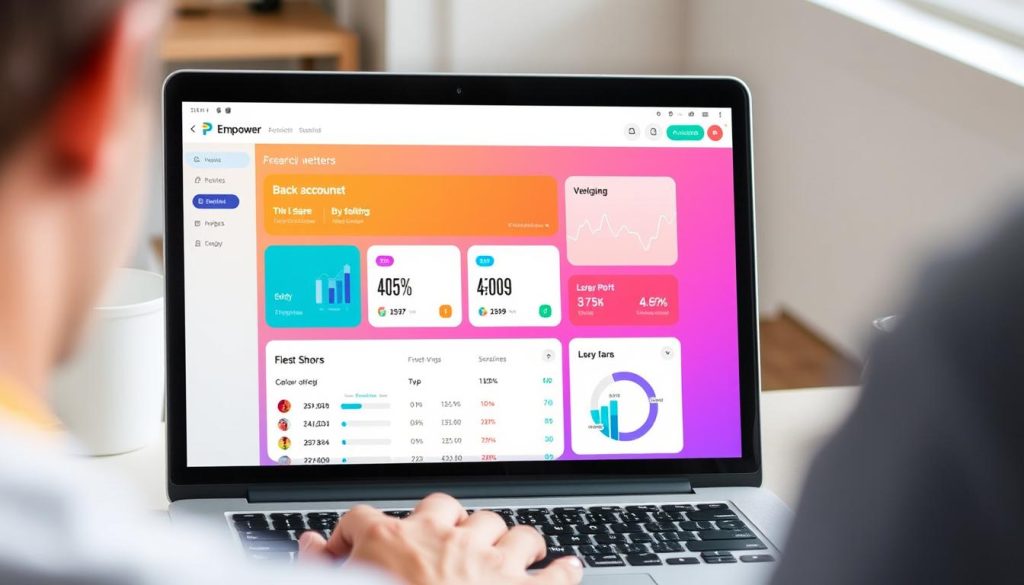
For those seeking a comprehensive financial planning tool, Empower stands out. It allows users to link all their financial accounts, including credit cards, checking accounts, savings accounts, and investment accounts, in one place.
Key Features
Empower’s dashboard provides a bird’s-eye view of your finances, with several tools to help you dive into the details. Key features include tracking your net worth, running retirement scenarios, and adding different savings goals to see how they affect your financial planning.
Pricing Plans
Empower is a free app, making it accessible to a wide range of users. While the basic financial tracking features are free, Empower also offers wealth management services for those seeking more personalized financial guidance at an additional cost.
Pros and Cons
Empower’s comprehensive financial planning platform offers holistic wealth management tools. However, the additional fees for wealth management services may be a consideration for some users.
Chime: Best for Spare Change Savings
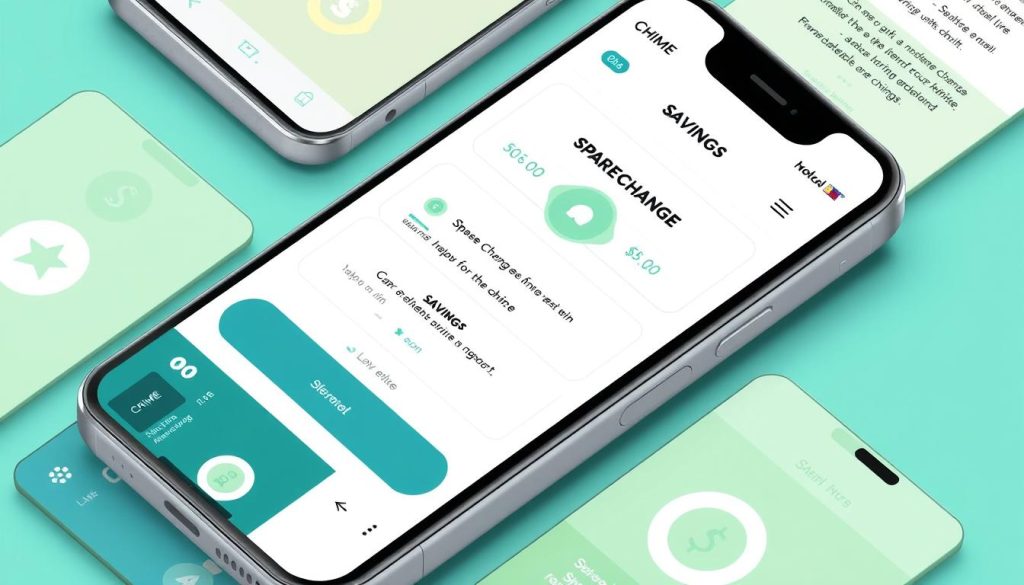
Chime’s mobile banking app is designed to make saving money easy and automatic. With its high-yield savings account, users can grow their money faster than with traditional bank accounts.
Key Features
Chime offers several key features that make it an attractive option for savers. These include:
- Spare Change Roundups: Automatically round up debit card purchases to the nearest dollar and transfer the change to your savings account.
- Automated Savings: Set up automatic transfers of a percentage of your direct deposits into your savings account.
Pricing Plans
Chime’s services are offered without monthly fees or minimum balance requirements, making it accessible to a wide range of users. The high-yield savings account is a key component, providing a competitive interest rate to help your savings grow.
Deposits are insured up to $250,000 by Chime’s banking partners, which are members of the Federal Deposit Insurance Corp (FDIC), ensuring your money is secure.
Pros and Cons
Chime’s advantages include its ease of use, lack of fees, and robust savings features. However, as with any financial service, it’s essential to review the terms and conditions to understand fully how it works.
- Pros: Easy to use, no fees, automated savings features.
- Cons: Limited branch access, reliance on digital banking.
You Need a Budget (YNAB): Best for Detailed Budgeting

Detailed budgeting is made simple with You Need a Budget (YNAB), a tool that ensures every dollar is accounted for. YNAB is one of the most detail-oriented budgeting tools available today. With a YNAB budget, every dollar is given a purpose, whether for saving, everyday spending, or putting toward long-term goals, such as retirement.
Key Features
YNAB implements a zero-based budgeting philosophy where every dollar is assigned a specific job, creating complete awareness and intentionality around your financial decisions. The app’s four core rules provide a comprehensive framework for financial success. Additionally, YNAB excels at helping users break the paycheck-to-paycheck cycle by encouraging them to “age their money.”
Pricing Plans
After a 34-day free trial, YNAB costs either $14.99 monthly or $109 annually. You can share your YNAB subscription with up to six people, making it a viable option for families or shared households.
Pros and Cons
The detailed categorization system allows for granular tracking of expenses, helping users identify specific areas where spending can be optimized or reduced. While YNAB has a steeper learning curve than some competitors and charges a higher subscription fee, users often report significant financial improvements, with the average user saving $600 in their first two months.
How to Choose the Best Money-Saving Apps for Your Needs
With numerous money saving apps available, identifying your financial goals is crucial to making the right choice. Before selecting an app, it’s essential to understand what you want to achieve.
Identify Your Financial Goals
Selecting the right money saving app begins with clearly defining your specific financial objectives, whether that’s building an emergency fund or saving for a major purchase. Consider your current financial challenges and prioritize apps that address those needs.
Consider App Features
Evaluate the app’s features and ensure they align with your financial goals. If you struggle with overspending, look for apps with strong budgeting tools. For consistent saving, consider apps with automated savings features.
Evaluate Costs and Fees
Compare the fees associated with different money saving apps, considering both direct costs and indirect costs. Ensure that the app’s features justify the costs and align with your budget.
By following these steps, you can choose a money-saving app that helps you achieve your financial goals and save money effectively.
Money Saving Apps Conclusion
In the end, money-saving apps offer a range of benefits that can help individuals save money and achieve their financial objectives. These apps have transformed the financial landscape, making it easier than ever to build healthy savings habits and work toward meaningful financial goals.
The best app for your needs will depend on your specific financial situation, objectives, and personal preferences regarding features and user experience. Many users find that combining multiple specialized apps—perhaps one for budgeting and another for automated savings—creates a comprehensive system that addresses all their financial needs.
To maximize the benefits, it’s essential to regularly reassess your chosen tools to ensure you’re taking advantage of the most effective features and competitive pricing available. Consistency is key; finding tools that help you maintain good financial habits over time will yield the greatest benefits for your long-term financial health.
Money Saving Apps FAQ
What are the benefits of using a budgeting app?
Budgeting apps help you track your expenses, create a budget, and set financial goals. They also provide a clear picture of your spending habits, enabling you to make informed decisions about your finances.
How do I choose the right financial management tool for my needs?
To choose the right financial management tool, consider your financial goals, the features you need, and the costs associated with the tool. Evaluate the user interface, customer support, and any additional services offered.
Can I use a savings app to automate my savings?
Yes, many savings apps allow you to automate your savings by setting up recurring transfers from your checking account to your savings or investment accounts.
What is investment management, and how can it help me?
Investment management involves managing your investments to achieve your financial goals. It can help you grow your wealth over time by providing a diversified investment portfolio and expert guidance.
Are there any fees associated with using a financial planning tool?
Some financial planning tools charge fees for their services, while others are free. It’s essential to understand the fee structure before signing up for a service.
How can I track my spending and stay on top of my finances?
You can track your spending by using a budgeting app, keeping a spreadsheet, or recording your expenses manually. Regularly reviewing your transactions and categorizing your expenses can help you stay on top of your finances.
What is debt management, and how can it help me?
Debt management involves managing your debt to reduce your financial burden. It can help you create a plan to pay off your debts, negotiate with creditors, and improve your credit score.
Can I use a banking service to manage my finances?
Yes, many banking services offer financial management tools, such as budgeting apps and investment services, to help you manage your finances.

